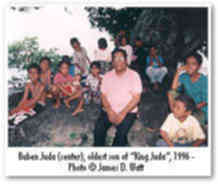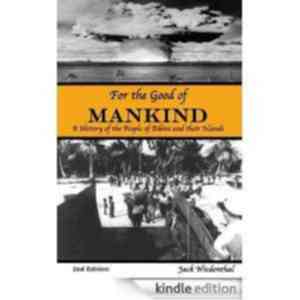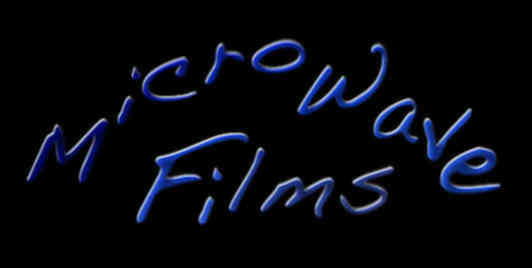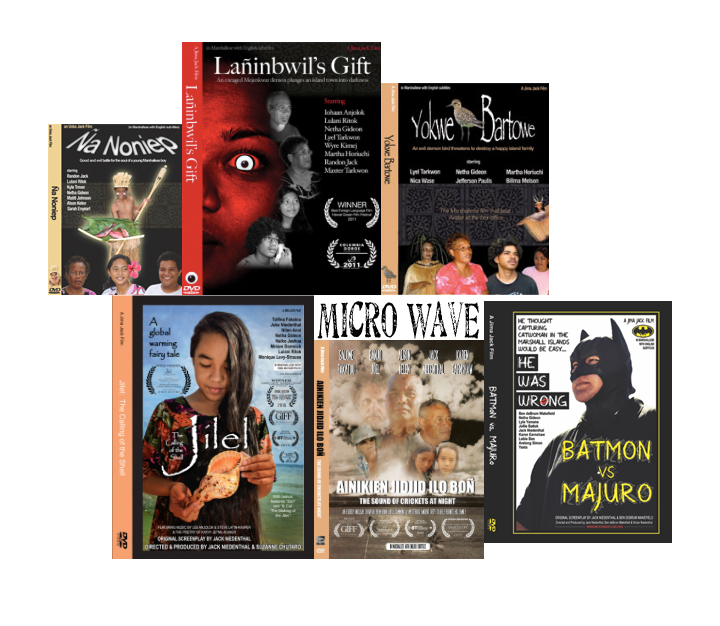THE FUNERAL OF HON. COUNCILMAN RUBON JUDA
April 19, 2003
 Hon. Councilman Rubon Juda Hon. Councilman Rubon JudaRubon died from natural causes in Honolulu, Hawaii on April 4, 2003 at the age of about 80. He was a former Councilman who had served several terms before his retirement from office in the late 1990's. Rubon was a very special member of our community. He was King Juda's oldest son and the oldest brother of Senator Tomaki Juda. He was an expert practitioner of Marshallese medicine, a church deacon, and had a vast knowledge of Bikinian history. He loved to make people laugh and was well known for his ability to care about others. When I lived on Kili from 1984-87 I lived with Rubon, so it was through his eyes that I learned and experienced much of the Bikinian culture in my early years with the people of Bikini. When my father died in 1985, he stayed by me for three days as I had to wait for an Air Marshalls plane to take me from Kili Island to Majuro, where I then flew to the United States for the funeral. His unselfish, kind consideration shown toward me during such a trying time was greatly appreciated and has never been forgotten. I know that if it had not been for Rubon, I probably would not have stayed in the Marshall Islands because he was one of the people who really made me care about this country and the people here. The President of the Marshall Islands, Kessai Note, eulogized Rubon at the wake [ilomej] as one of those elders who led the Bikinians during their exodus from Bikini that involved repeated bouts with starvation: a period in the Bikinians' history that involved courageous leaders. Indeed, he meant a great deal to many people and his funeral turned into a very, very emotional affair. He is survived by many children, grandchildren and great grandchildren. Rubon was buried beside his house on Majuro Atoll. -JMN 4/20/2003 |
 |
Rubon died in Honolulu on April 4, 2003. His remains travelled to Majuro in the Marshall Islands on Tuesday, April 15, 2003 on Aloha Airlines. Many people were at the airport to greet him. |
 |
The funeral procession from the airport went straight to Rubon's house in Long Island of Majuro Atoll. |
 |
According to Marshallese custom, after arriving at Rubon's house, the body was placed in state by the Bikini police force in his living room for the ilomej, which is similar to a wake. |
 |
For the ilomej, people from various communities in the Marshall Islands visit the house to pay their last respects to the deceased. |
 |
The ilomej can last for several days. The ilomej for Rubon lasted for 5 days before he was buried. It is customary, after the speeches, to place money on the body of the deceased [as is pictured here]. |
 |
On the day of Rubon's burial on April 19, 2003, the grave site is prepared by family members and construction workers. |
 |
Sometimes the bodies of the dead in the Marshall Islands are buried in the ground, and sometimes they are buried above ground in a tomb as was Rubon. Here a worker attaches Rubon's photo to the tomb. |
 |
Rubon's granddaughters prepare the grave as the sun goes down. The ilomej now over, the family prepares for the burial of Rubon Juda. This portion of the funeral is called the kallib. |
 |
The Bikini local government police force carries Rubon toward the grave site for the kallib. |
 |
The Bikini police force salutes the body of Rubon Juda before the speeches begin. There were many important people in attendance for this funeral. |
 |
Rubon's family grieves before the eulogies begin. Pictured here are his children, grandchildren and great grandchildren. |
 |
The President of the Marshall Islands, Kessai Note, explains how important Rubon Juda was to the Bikinian Community. Rubon was also President Note's uncle. |
 |
Many people eulogized Rubon, including Councilman Mike Jibas [pictured], Senator Tomaki Juda, Mayor Eldon Note, Councilman Uraki Jibas, Liaison Jack Niedenthal and others. |
 |
After all of the eulogies, the President of the United Church of Christ, Reverend Jude Samson, said a prayer for Rubon before the burial. |
 |
After the prayer, the Bikini police force carefully placed the coffin inside of the tomb. |
 |
After being laid to rest in the tomb, the coffin is covered with Rubon's sleeping mat, or jake, which is part of Marshallese custom for the kallib. |
 |
After the tomb is sealed, the people begin the ceremony known as the eoreak. This is started by calling up prominent members of the community to spread white coral rocks around the grave. Here, Rubon's younger brother, Senator Tomaki Juda lays a basket of coral by the grave. They say once the rocks have been spread around the grave, the spirit of the deceased leaves the earth forever. |
 |
As part of the eoreak ceremony, a huge feast is held. Here, women related to Rubon hand the visitors plates of food and cola. This feast lasts well into the evening. |
 |
Everybody gets a plate of food at the eoreak feast. T-shirts, blankets, towels, coolers filled with food and cases of cola are given away as gifts to those who have attended the funeral. |
This Bikini Atoll website is sponsored by: To purchase or rent Microwave Films and DVDs MICROWAVE FILMS
|
 |
The historical information within this site, while constantly updated, is drawn largely from the book, FOR THE GOOD OF MANKIND: A History of the People of Bikini and their Islands, Second Edition, published in September of 2001 by Jack Niedenthal. This book tells the story of the people of Bikini from their point of view via interviews, and the author's more than two decades of firsthand experiences with elder Bikinians. Copies can be purchased from this direct ordering link at Amazon.com, or you can also buy and download the Kindle edition. |

